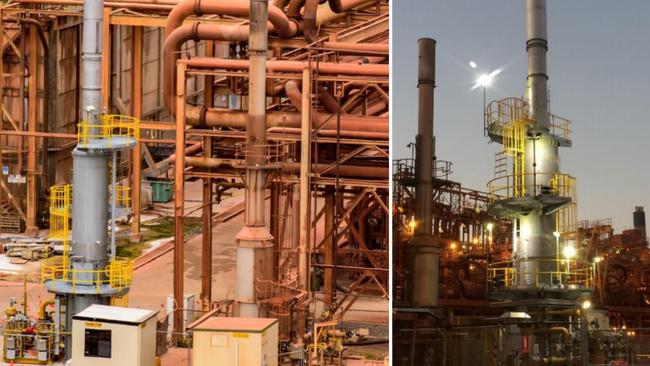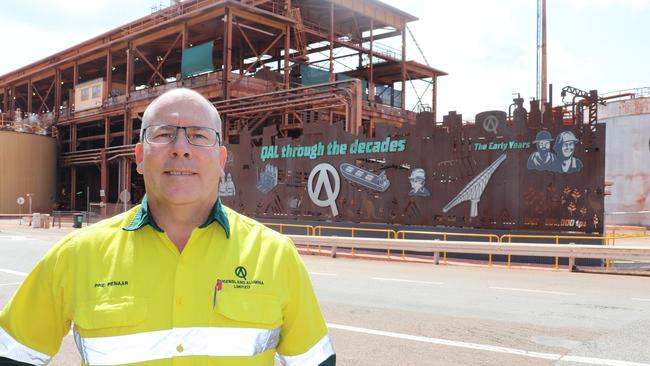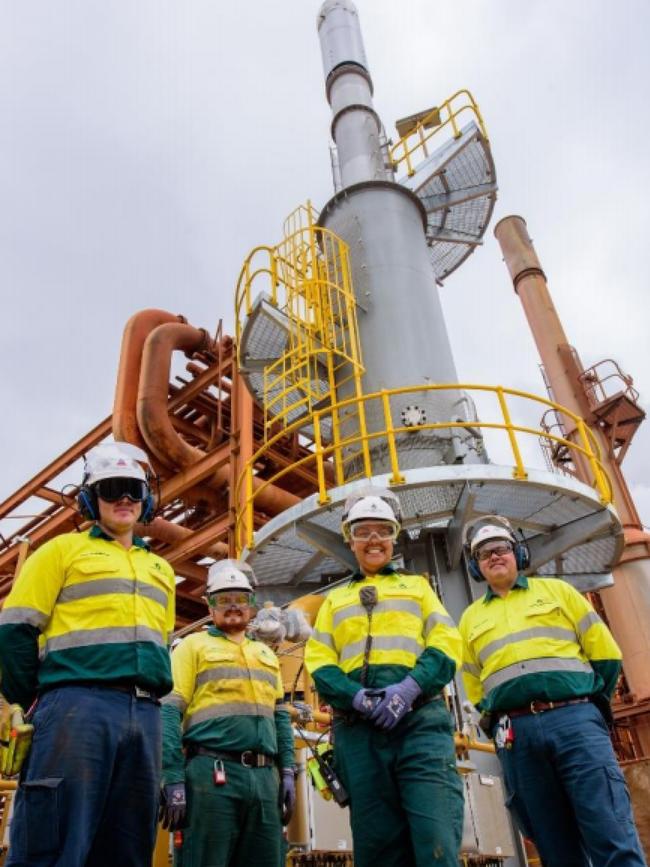QAL invested $3.3m to upgrade its odour reducing technology
The refinery’s new thermal oxidiser burns 200 degrees hotter and has four times the capacity of the old unit.

Gladstone
Don't miss out on the headlines from Gladstone. Followed categories will be added to My News.
Odours around the Gladstone region emitted from QAL have been significantly reduced after a new $3.3m thermal oxidiser was commissioned to boost the plants smell reduction technology.
The alumina refinery’s new thermal oxidiser, a large burner used to destroy odorous gases, is a massive upgrade, processing four times more gas than the previous 15-year-old unit.
Predominantly produced in the digestion section of the refinery, odours are created when organics in the bauxite are mixed with caustic soda and heated to 250 degrees celsius.

The smells produced in the bauxite refining process are not harmful, but can be unpleasant when odours impact the nearby community.
QAL general manager Pine Pienaar said thermal oxidisers were one of the few readily available technologies for alumina refineries to combat odour.
“The beauty of this project is that it is proven technology and now we have a bigger and better version,” Mr Pienaar said.
“To put it in simple terms, you could compare the thermal oxidiser to a giant Bunsen burner. “We capture and send odorous gases into the gas burning chamber and the flame burns it, effectively destroying the smell.”
Burning at 950 degrees celsius, the new thermal oxidiser is around 200 degrees hotter than the old unit and allows for 100 per cent odour-destruction efficiency.
Taking 10,800 hours to construct and commission, the new 21-tonne thermal oxidiser was delivered to QAL using three trucks from Melbourne.
The new thermal oxidiser was part of QALs $400M five-year environment strategy to improve environmental performance and reduce community impact.
In addition to the thermal oxidiser, QAL is investing millions and a dedicated research and
development team with specialist skills into never-before-done studies and projects to reduce other sources of plant odour.
In 2020, QAL completed a plant trial with non-thermal plasma technology, which delivered 90 per cent odour destruction from the odorous bad wash water tank.

Fit-out of the bad wash water tank with this technology is now approved, at an estimated cost of $1.5m, with completion expected by the end of 2021.
Mr Pienaar said the research and development team was now working on projects to use the thermal oxidiser to destroy more of the plants odours.
“At the digestion relief tanks, where roughly one third of the plant’s odour comes from, we are trialling two separate technologies that will allow more odorous gases to be sent to the thermal oxidiser for destruction,” Mr Pienaar said.
Other stories
COVID positive Gladstone visitor says virus ‘cruel karma’


